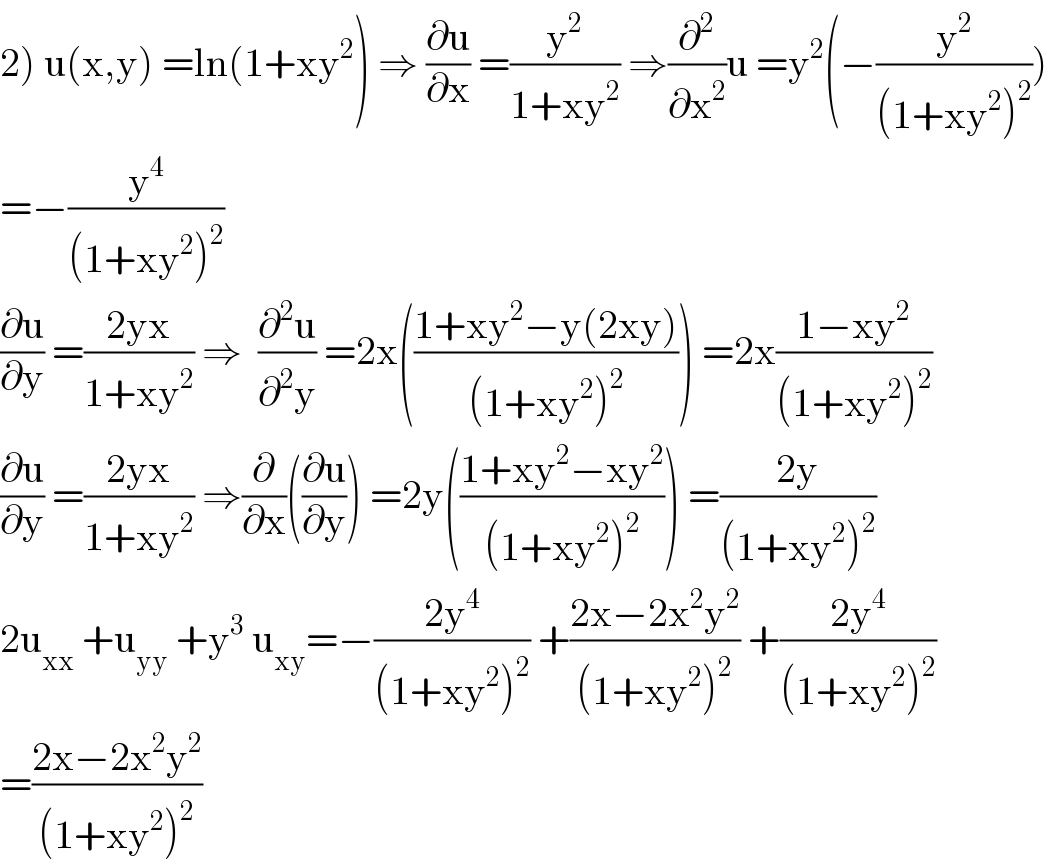
Question and Answers Forum
Question Number 97368 by Riad last updated on 07/Jun/20
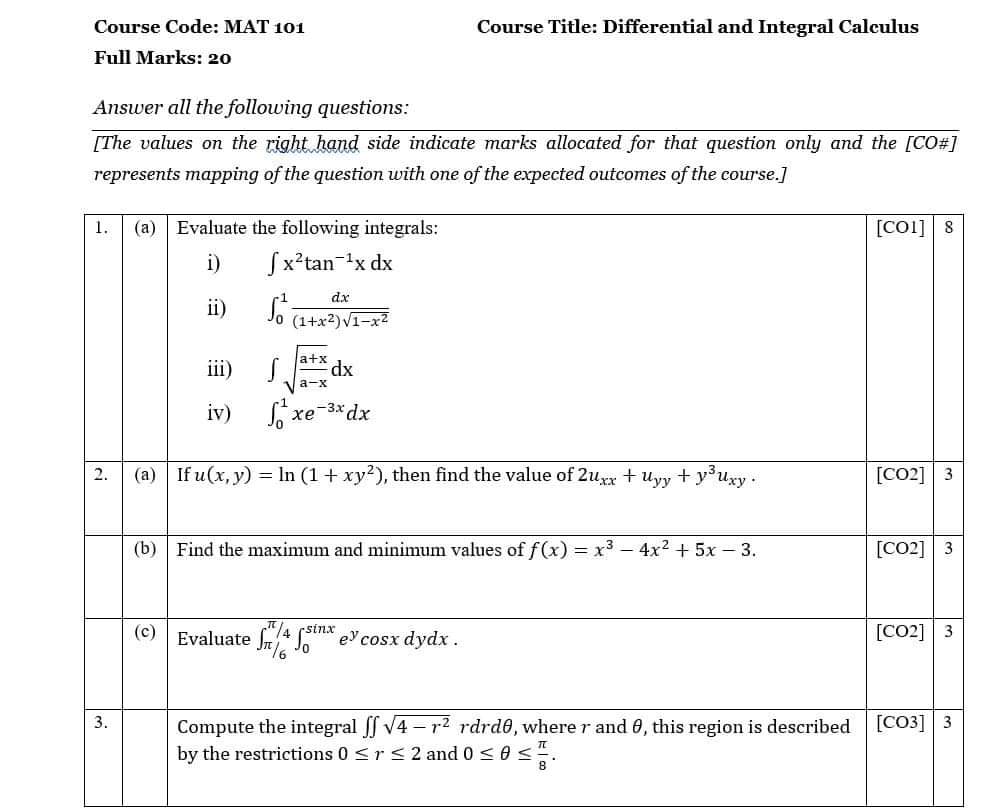
Commented by Tony Lin last updated on 07/Jun/20
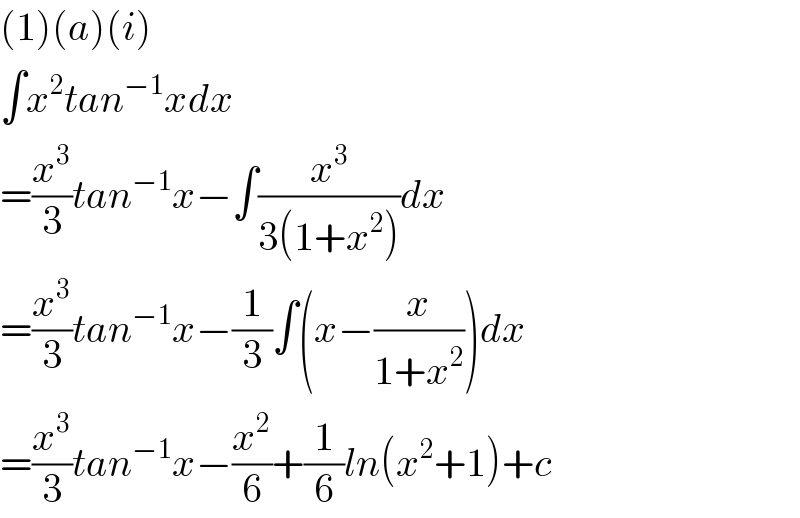
Commented by Riad last updated on 07/Jun/20

Commented by Tony Lin last updated on 07/Jun/20
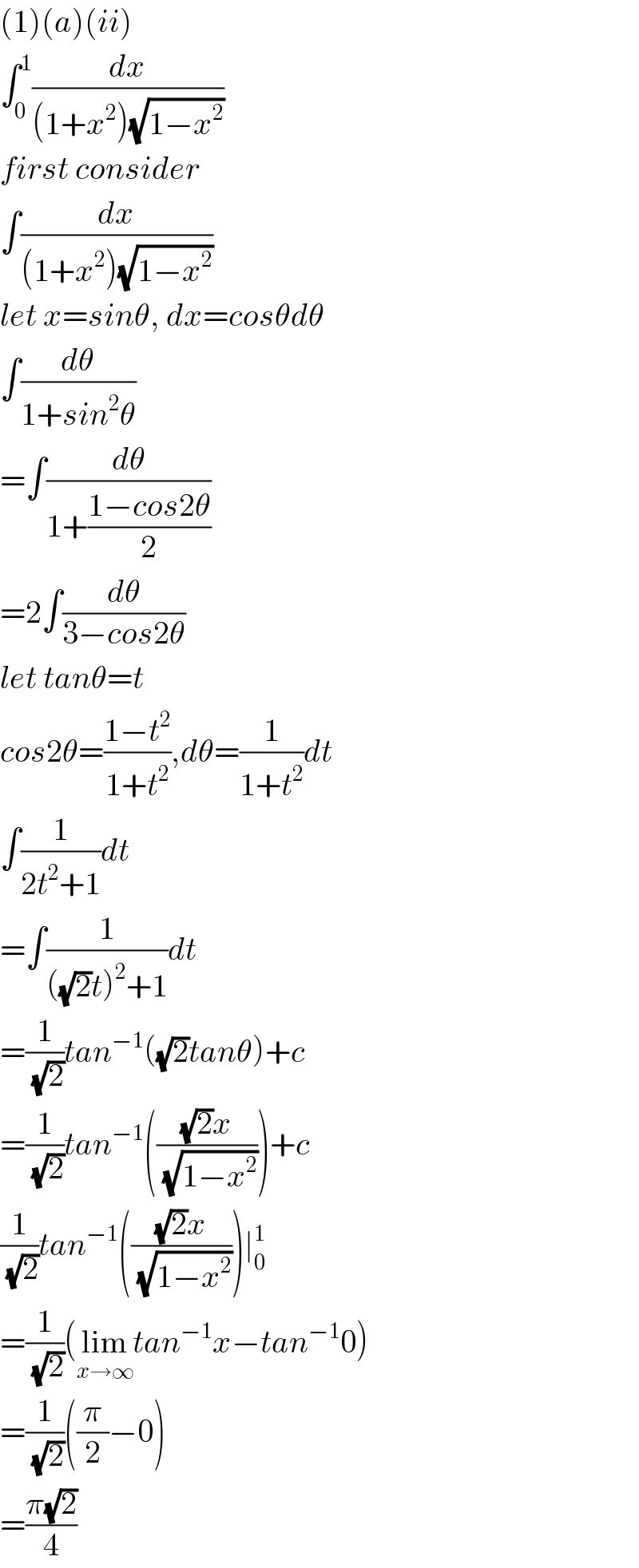
Commented by Tony Lin last updated on 07/Jun/20
![(2)(a) u_x =(y^2 /(1+xy^2 )) u_y =((2xy)/(1+xy^2 )) u_(xx) =((−y^2 )/((1+xy^2 )^2 )) u_(yy) =((2x−2x^2 y^2 )/((1+xy^2 )^2 )) u_(xy) =((2y−2y^2 x^2 )/((1+y^2 x)^2 )) 2u_(xx) +u_(yy) +y^3 u_(xy) =−2[((y^2 −x+x^2 y^2 −y^4 +y^4 x^2 )/((1+y^2 x)^2 ))]](Q97391.png)
Commented by Tony Lin last updated on 07/Jun/20
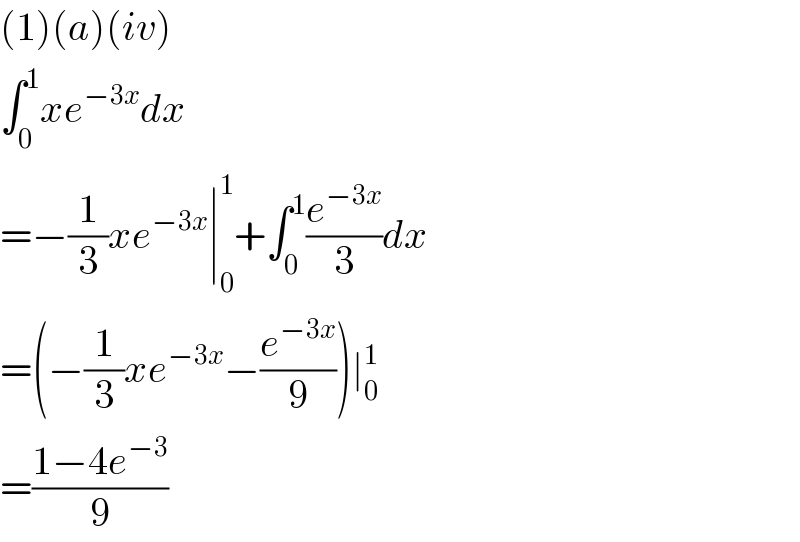
Commented by Tony Lin last updated on 07/Jun/20
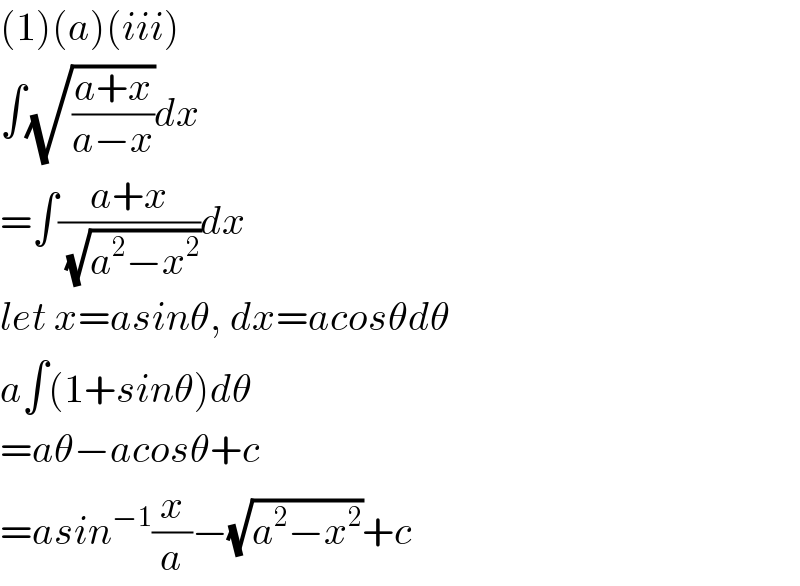
Commented by Tony Lin last updated on 07/Jun/20
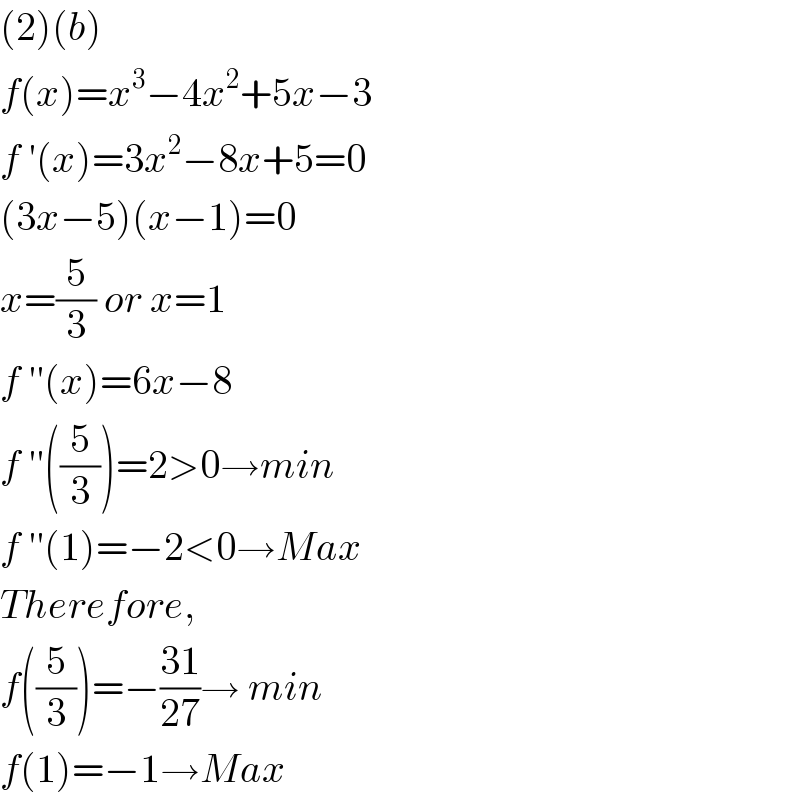
Commented by Tony Lin last updated on 07/Jun/20
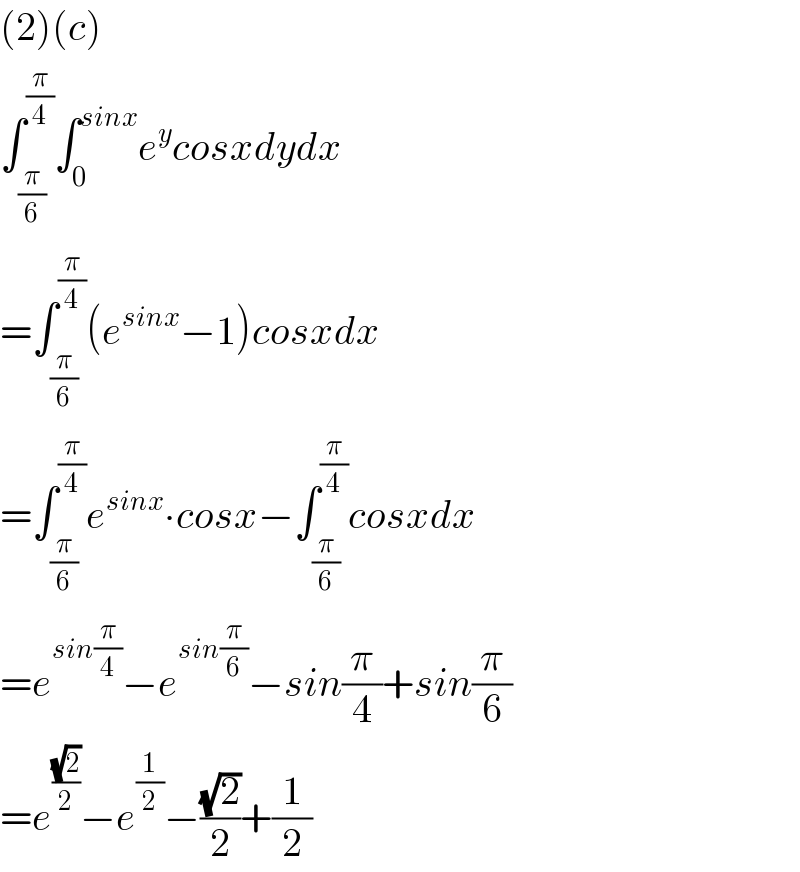
Commented by Tony Lin last updated on 07/Jun/20
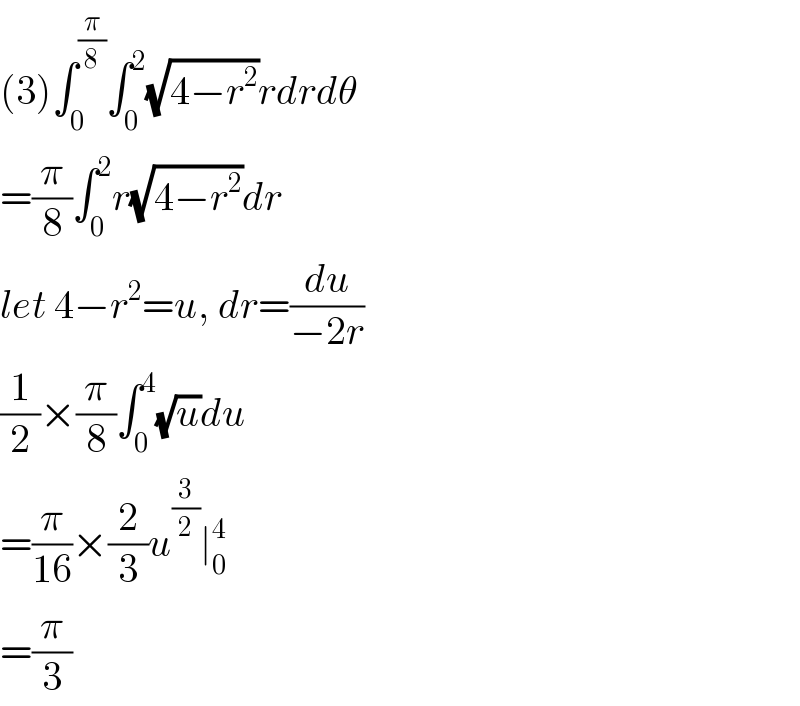
Commented by Tony Lin last updated on 07/Jun/20

Commented by Riad last updated on 07/Jun/20

Answered by mathmax by abdo last updated on 07/Jun/20
![3) I =∫∫_D (√(4−r^2 ))rdrdθ =∫_0 ^2 r(√(4−r^2 ))dr ∫_0 ^(π/8) dθ =(π/8) ∫_0 ^2 r(√(4−r^2 ))dr =(π/8) ∫_0 ^2 r(4−r^2 )^(1/2) dr =(π/8)[−(1/3)(4−r^2 )^(3/2) ]_0 ^2 =−(π/(24)){−4^(3/2) } =(π/(24))×8 =(π/3)](Q97406.png)
Answered by mathmax by abdo last updated on 07/Jun/20
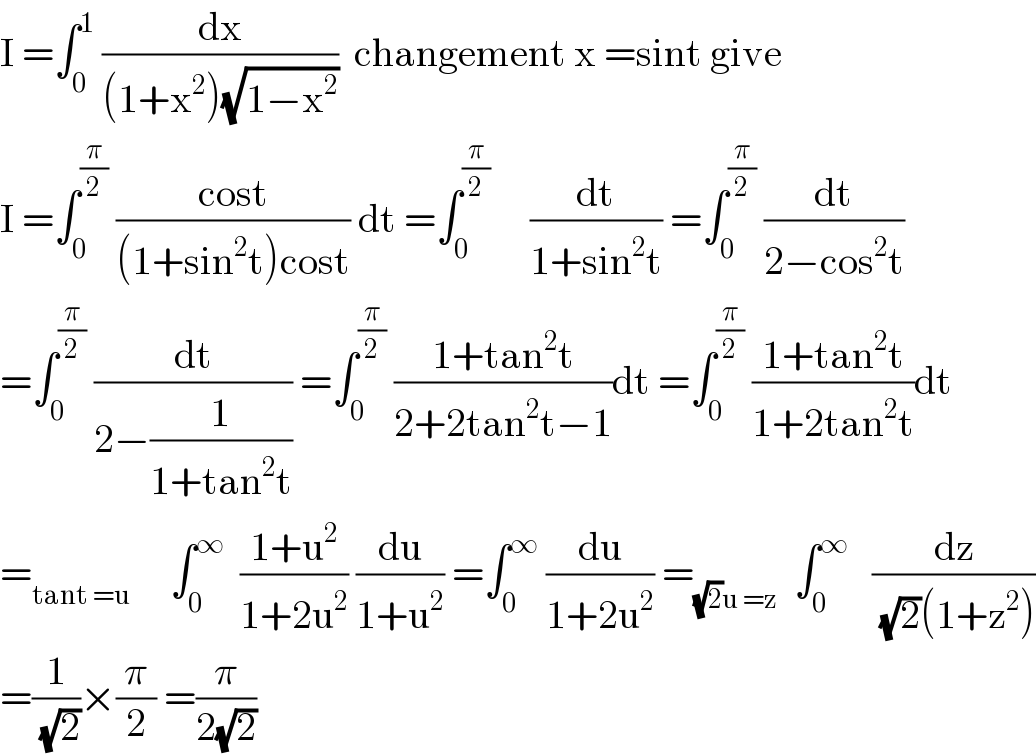
Answered by mathmax by abdo last updated on 07/Jun/20
